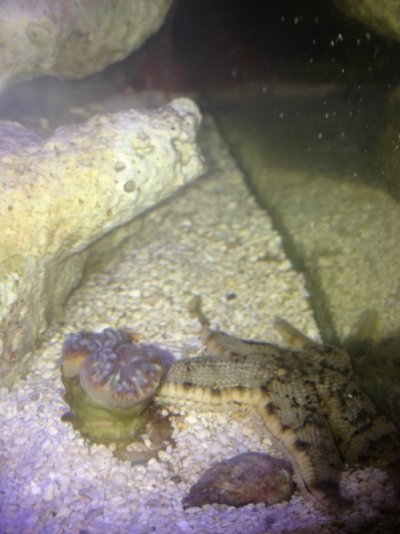Wow. This thread has gotten kind of crazy.
I am going to start from the beginning to get all of the information out there that I think has been skimmed over. Sorry for the length but I feel it's necessary to get all of this information out there.
First off - Parameters
Every speck of fish food that goes into the tank will be made into ammonia, either being eaten and pooed by fish or just rotting in the tank. Ammonia is highly toxic to everything. You want your ammonia at 0. Any higher than that in a reef tank and there is a problem
There are bacteria in a tank that convert the ammonia to nitrite . The nitrite is also very toxic to everything alive in the tank. This also needs to be at 0. Any reading higher than that also signifies a problem.
Finally there are bacteria in the tank that converts the nitrites to nitrates. The nitrate is much less poisonous to fish. You want to keep this at 20 or below in a reef. There is also a bacteria that can be found in live rock that will consume the nitrate. This completes the cycle.
There are other things that you need to test for in a reef. Both phosphate and calcium are HUGELY important to test for in a reef.
High phosphates will cause algae growth and issues for corals
Low calcium will cause stunted growth for stony corals
Second - Salinity
Your salinity is FAR too high to be safe for anything in your tank and is very likely the reason your corals aren't doing very well. Start by taking out small amounts of water and replacing it with fresh ro/di or at the very least dechlorinated water. I would start with 1 cup at a time hourly until the specific gravity is down to about 1.025. The seasoning of a hydrometer is to remove any chemicals or harmful substances in the hydrometer, it will give a reasonably accurate reading whether it's seasoned or not.
Third - Algae
You are having massive amounts of algae growth because there are far too many nitrates and probably phosphates in the water. Start by doing large water changes - Approx 50% while making absolutely sure to match the temperature and the salinity of the replacement water before adding it to the tank. Each 50% water change will drop your nitrates by half. I would do at least 2 of these water changes waiting a day inbetween them.
Also, manual removal of the hair algae is important to control it. You can either take the rock out of the tank to remove it or simultaneously scrub and siphon it while the rock is still in the tank.
Fourth - Top off
Make sure to keep your water level constant. When you add more water due to evaporation make sure to use fresh water and not salt water.
Question time:
What lights are you using?
How long do you leave the lights on every day?
What kind of water flow do you have?

